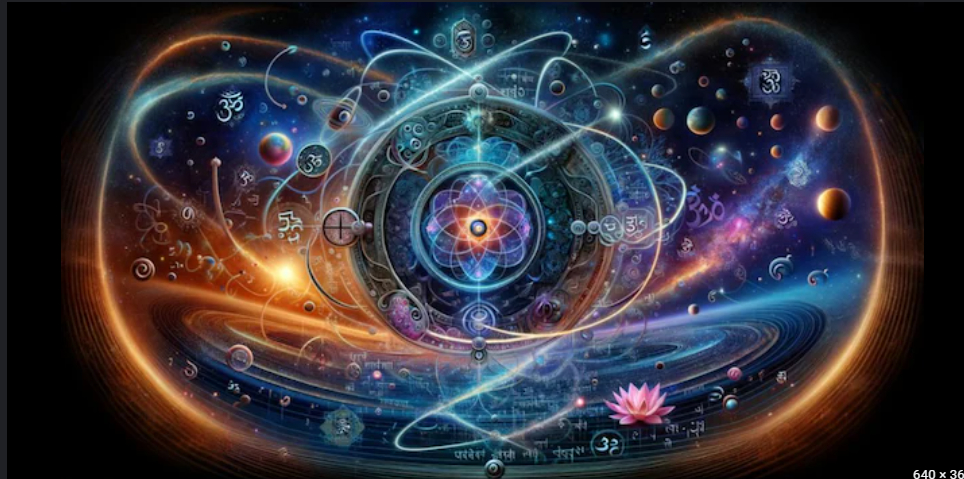The Connection Between Science and Spirituality
1. The Quest for Understanding Reality
At their core, both science and spirituality are driven by a desire to comprehend the universe and humanity’s place within it. While science investigates the physical and observable world, spirituality delves into the inner, often intangible aspects of existence. Together, they form a holistic approach to understanding reality:
- Science’s Contribution: Science seeks to explain phenomena through observation, experimentation, and analysis. It answers questions about “how” the universe functions, such as the laws governing motion, energy, and matter.
- Spirituality’s Contribution: Spirituality addresses the “why” — exploring the purpose, meaning, and interconnectedness of life. It focuses on experiences that transcend the material world, such as love, compassion, and enlightenment.
By integrating these perspectives, we gain a more profound understanding of the universe, bridging the gap between the tangible and the transcendental.
2. Shared Themes and Goals
Interconnectedness
Both science and spirituality highlight the interconnectedness of existence. In quantum physics, the concept of entanglement shows that particles can influence each other across vast distances, reflecting the interconnected nature of the universe. Similarly, spiritual traditions like Buddhism and Hinduism emphasize unity, teaching that all beings are part of a greater whole.
Exploration of Consciousness
Consciousness remains one of the greatest mysteries in both science and spirituality. Neuroscientists study the brain to understand how consciousness arises, while spiritual practices like meditation and mindfulness explore subjective experiences of awareness. Both approaches aim to unravel the complexities of the human mind.
A Sense of Wonder
Science and spirituality share a deep sense of wonder about existence. The awe inspired by scientific discoveries, such as the vastness of the cosmos or the intricacies of DNA, parallels the reverence experienced in spiritual practices like prayer or meditation. Both paths encourage curiosity and humility in the face of the unknown.
The Differences Between Science and Spirituality
1. Methods of Inquiry
- Science:
Science relies on empirical evidence, systematic observation, and repeatable experiments. It seeks objective truths that can be tested and verified, adhering to the scientific method. For example, scientific discoveries about gravity or the speed of light are grounded in measurable and repeatable data. - Spirituality:
Spirituality, on the other hand, is deeply personal and subjective. It often involves inner exploration, intuition, and experiences that cannot be measured or quantified, such as feelings of transcendence or connection to a higher power.
2. Nature of Evidence
- Science:
Science depends on observable and tangible evidence. If something cannot be measured or observed, it remains outside the scope of scientific understanding. - Spirituality:
Spirituality values experiential evidence — insights gained through personal experiences, meditation, or faith. These experiences, while deeply meaningful to individuals, often lack the universality required for scientific validation.
3. Focus and Perspective
- Science:
Science is primarily concerned with the external world — the physical universe and its mechanisms. It seeks to uncover “how” things work through logic, experimentation, and deduction. - Spirituality:
Spirituality focuses on the internal world of the mind, emotions, and soul. It explores “why” questions, such as the purpose of existence and the nature of happiness and suffering.
Bridging Science and Spirituality
While the differences between science and spirituality are significant, they are not irreconcilable. In fact, some of the most profound insights arise at the intersection of these two disciplines:
1. Neuroscience and Meditation
Scientific studies on meditation provide a tangible connection between science and spirituality. Research shows that meditation can reduce stress, improve focus, and even rewire the brain through neuroplasticity. These findings validate ancient spiritual practices while offering scientific insights into their benefits.
2. Quantum Physics and Mysticism
Quantum physics challenges traditional notions of reality, introducing concepts like superposition, entanglement, and the observer effect. These ideas resonate with spiritual teachings about the nature of existence and consciousness, fostering a dialogue between mystics and physicists.
3. The Power of Mind-Body Connection
Science has revealed the profound impact of the mind on physical health, aligning with spiritual teachings that emphasize holistic well-being. Practices like yoga, mindfulness, and energy healing demonstrate how integrating spiritual principles with scientific knowledge can improve overall health.
The Role of Science and Spirituality in Human Life
Complementary Perspectives
Rather than competing, science and spirituality can complement each other. Science provides tools to understand the material world and solve practical problems, while spirituality offers guidance on navigating life’s deeper questions and cultivating inner peace.
A Holistic Approach
By embracing both science and spirituality, individuals can adopt a holistic approach to life. Science can inform ethical decisions, while spirituality can inspire compassion, resilience, and purpose. Together, they create a framework for balanced and meaningful living.















